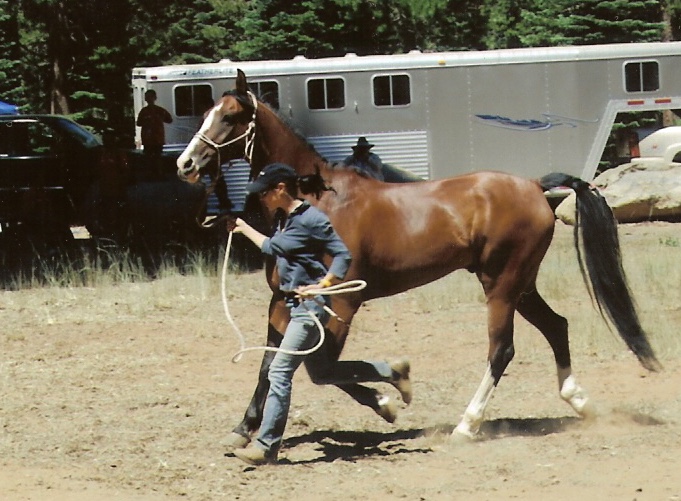Transcript from PechaKucha talk with @wyldepeople
How to Win a 100-Mile Horse Race. First, I never enter a race to win; I always intend to do my best. Sometimes just finishing is a victory.
Once such a race comes to mind, it is called the Tevis Cup. One horse, one rider, 100 miles, one day, 24 hours to finish. It is the granddaddy of Endurance racing; many consider it the most challenging race in the world, the Indy 500 of my sport. Yet, more people have summited Mt. Everest than have completed the Tevis Cup.
Eighteen miles into the race, we are on a section called the Granite Chiefs, which are large boulders with a granite face and a sheer drop-off. The single-track trail runs along the top.
I am on Steel Patriot, an experienced endurance horse, and we are running in about the top 20 when suddenly the horse in front of us stops, which causes Steel to lose his footing, and he starts to slide down the granite face. Luckily I could jump off, pull his reins over his head, and I hold on for dear life.
Cut to:
Two weeks prior, a friend came to my barn to tell me of a mutual friend who was preparing for Tevis and pre-riding the Granite Chiefs the day before when her horse slipped and fell to his death.
I’m thinking, ‘I don’t want to hear this,’ I’m visualizing the perfect ride, and he continues saying, “If this ever happens to you, this is what you do.”
What he said was utterly counter-intuitive to how a horse moves. A horse wants to rock back to leap forward, and he said “to hold the horse’s head to the ground so that it forces them to use their haunches to move forward.”
So here I am at the top of Granite Chiefs, in the exact predicament. I am holding Steel’s head to the ground with all of my might; the guy behind me is screaming, “Don’t let go!” and I am praying that my reins don’t suddenly snap.
I looked into Steel’s beautiful, big, brown eyes, and I will him with every ounce of intention in my soul to push himself up.
And he does. We move to the side of the trail as the 180 horses and riders start to barrel past.
Steel and I continue forward slowly.
At 36 miles, we enter the vet check; it is the first time I see my crew. We arrived 15 mins from the cut-off, so if we had been 15 mins slower, we would have been disqualified. So we were over 2 hours off of our original ETA.
The veterinarians give me the ok to continue. Whew.
While revising my strategy and replanning my pacing, my head crew comes to me and says, “You have to let that shit go. You go do what you do best.”
What I do best is rise to the occasion.
I get on Steel, and we continue down the trail as a team. I would love to tell you all the adventures we encountered that day, but that’s a much longer story.
But I can tell you this, 204 horse and rider teams started that day, and 97 finished.
Steel and I crossed the line in 20th place.
What I know about Winning a 100-mile race is this.
You must be flexible to everything thrown at you.
You need to Let Go of all expectations.
You can never give up.
And winning is subjective.
Our placing that day was inconsequential to my victory as Steel and I crossed the finish line. And although we did not win the race, knowing that I can walk out to my barn today and look into Steel’s beautiful, brown eyes is the Biggest Win of my career.





